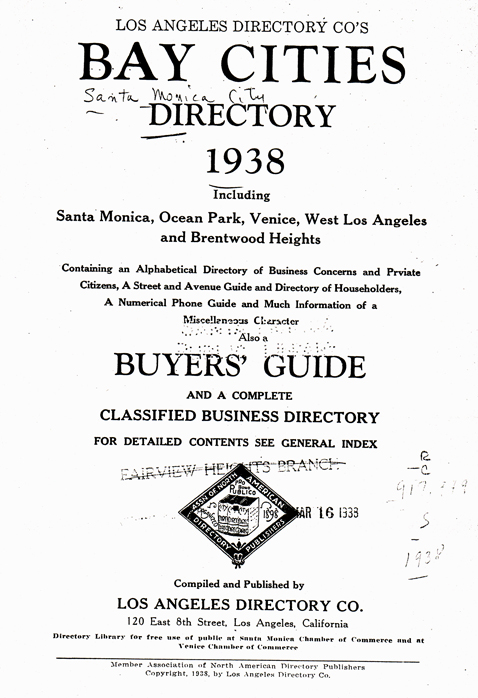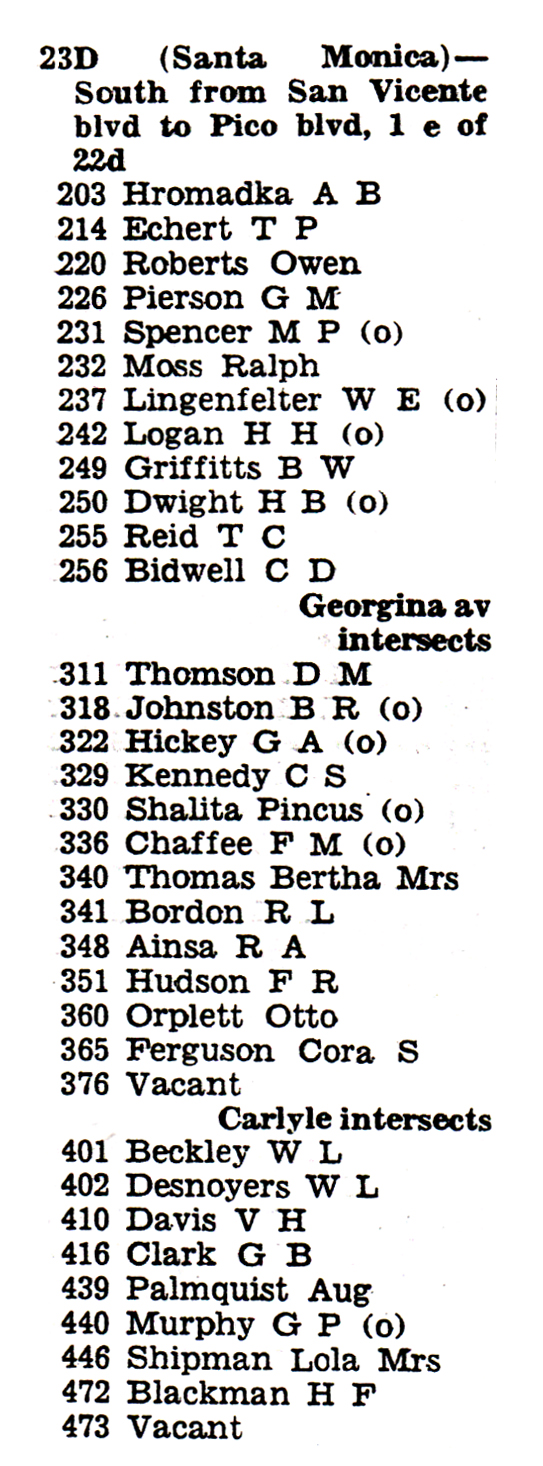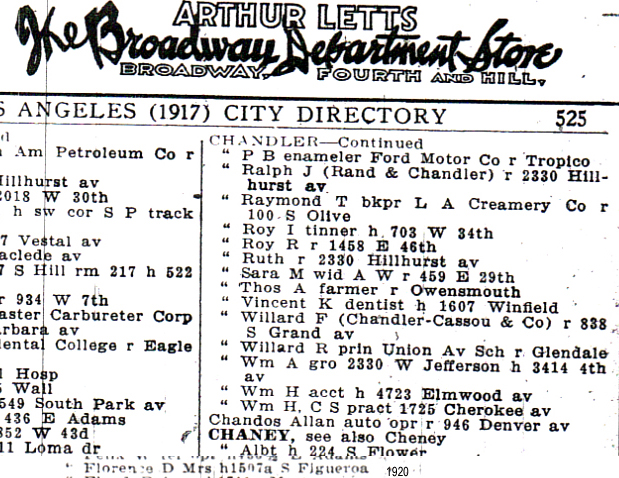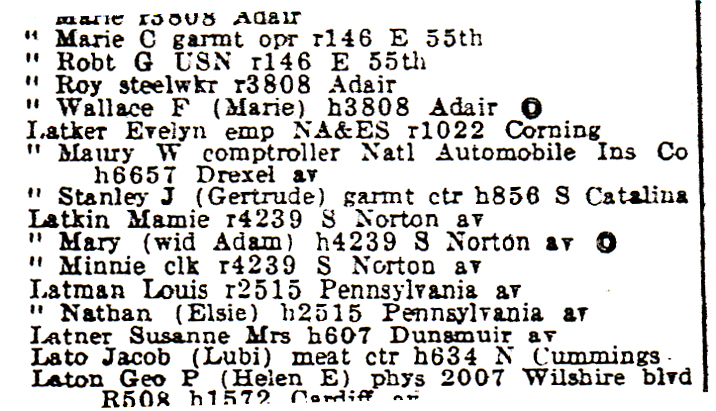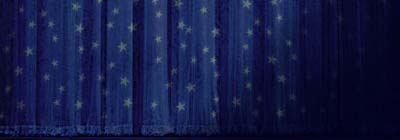
Bay City
|
||
|
Where did the name Bay City, for Santa Monica, come from? |
|
Over the years there have been many articles about the locations Chandler wrote about. In fact, I'm sure from the day Chandler's first short story appeared in Black Mask, readers were out looking for the exact locations. One article, "The Big Schlep," by Maurice Zolotow appeared in the September 1978 issue of Los Angeles (sans "Magazine" then). At that time there were occasional tour's of Raymond Chandler's Los Angeles, and Zolotow took and wrote about one, which included an actor in a trench coat as Philip Marlowe and a band. Anyway, one of the people taking the tour was Robert Wehner, described as a "physicist, aerospace scientist, Lockheed, U.S. Navy, Rand Corporation, delver into Raymond Chandler's Los Angeles." Wehner and his wife arrived in Los Angeles in 1946 and started looking for locations by foot and bus. During the 1978 tour Zolotow asked Wehner "Why did he call Santa Monica, Bay CIty?" Wehner said, "Nobody knows." That is true. To this day no one really knows why Chandler referred to Los Angeles as Los Angeles but to Santa Monica as Bay City. As I was researching some of the true crime that crept into Chandler's fiction, I went to the Santa Monica Public Library and requested the city directory of the period. To the left is the cover page of the 1938 city directory. Duh! It says Bay Cities! Why fight the directory company? The "Bay Cities" included:
Today both Brentwood and West Los Angeles are part of the city of Los Angeles, as they were back then - annexed to Los Angeles in the late '20s. A word about city directories - They were not phone books. They sometimes had phone numbers, but not arranged in a very usable way. For example, instead of listing names alphabetically, the phone numbers would be listed sequentially. That is, 12341, 12342, 12343, 12344, 12345, etc. A name would be associated with each number of course, but in order to find someone, you would have to know most of their number. As I said, not too useful. There were phones back then of course, and phone books. In fact, there were phone books in the late 1800s. But not everyone had a phone, or could afford one. And, phones were on a party line, that is, more than one household shared a phone line. Not just in rural areas. We had a party line in the Echo Park area into the 1950s! In fact, my grandmother tracked down the family who was on our party line. It was a hispanic family a couple of blocks away. Knowing my grandmother, she probablly told them off, because they would take their phone off the hook and when we tried to use ours all that could be heard was Mexican music. When we got a private line we celebrated! Of course, listing phone numbers was not the purpose of the city directory. It wasn't until after WWII that almost everyone had a phone, phone books came into wide usage and the golden age of city directories ended. One very nice feature of city directories was the street listing, as shown in the picture to the left. The section shown is for 23rd Street in Santa Monica, South from San Vicente. Notice that all the addresses are listed, and who lived at each address. The Santa Monica border is the rim of Santa Monica Canyon along Adelaide. The Streets numbers start at 100 from Adelaide South. Therefore, 200 23rd is South of San Vicente. Note that 256 23rd is no longer there - well, the house is, but the address is gone. It so happens that this house, rather it's garage, at 23rd and Georgina figures in a death, a 1940 murder trial and possibly some details that crept into the novel "The Lady In The Lake." Back in the 1930s the County of Los Angeles and the various cities in the county, including Santa Monica and Los Angeles, had different addressing schemes. In 1936 the City of Los Angeles adopted the county method. Santa Monica probably did the same around the same time. There were no changes to an address until a building permit was needed. At that point the address would have to be changed to match the county scheme, which was for the corner lot's address to be on the cross street. So, 256 23rd became 2301 Georgina Avenue. Notice the front door? It faces 23rd, not Georgina. A dead give away to the change, and the true age of the house. Other examples of city directories are the listings for Chandler, below. Notice the 1917 listing, giving his name, occupation, employer and residential address, the "r" (for residence) before 100 S. Olive, which was on Bunker Hill - his first home on the hill. Also there is the 1920 listing for his mother, Mrs. Florence D Chandler at 1507A South Figueroa, where the Los Angeles Convention Center is today. Finally, some city directories were updated more frequently than our modern phone books, after all, the cities had smaller populations. Also keep in mind that back then, as today, the directory companies worked about a year ahead of the published date. That is, like the U.S. Census, the Los Angeles Directory Company sent people door to door to find out who lived at each address. When a worker finished his assigned territory, he probably went back to the addesses he missed getting information on. In any case, working a year in advance and going back to survey missed address is probably why Chandler was found more than once in some years. For example, In 1929, the city directory shows the Chandlers in two locations: 2315 W 12 Street and 1024 South Highland Avenue Also, since the directory was researched during the year before publication, it really means that when I write Chandler was at W 12th Street in 1929, he was actually counted there sometime in 1928. Nothing like being precisse! The final example of city directories shows my family in 1941. My uncle Maury, my aunt Evelyn and my father and (mother). The listings showed their address and employer. The location at 856 S Catalina was where my parents lived just before I was born. |
||
